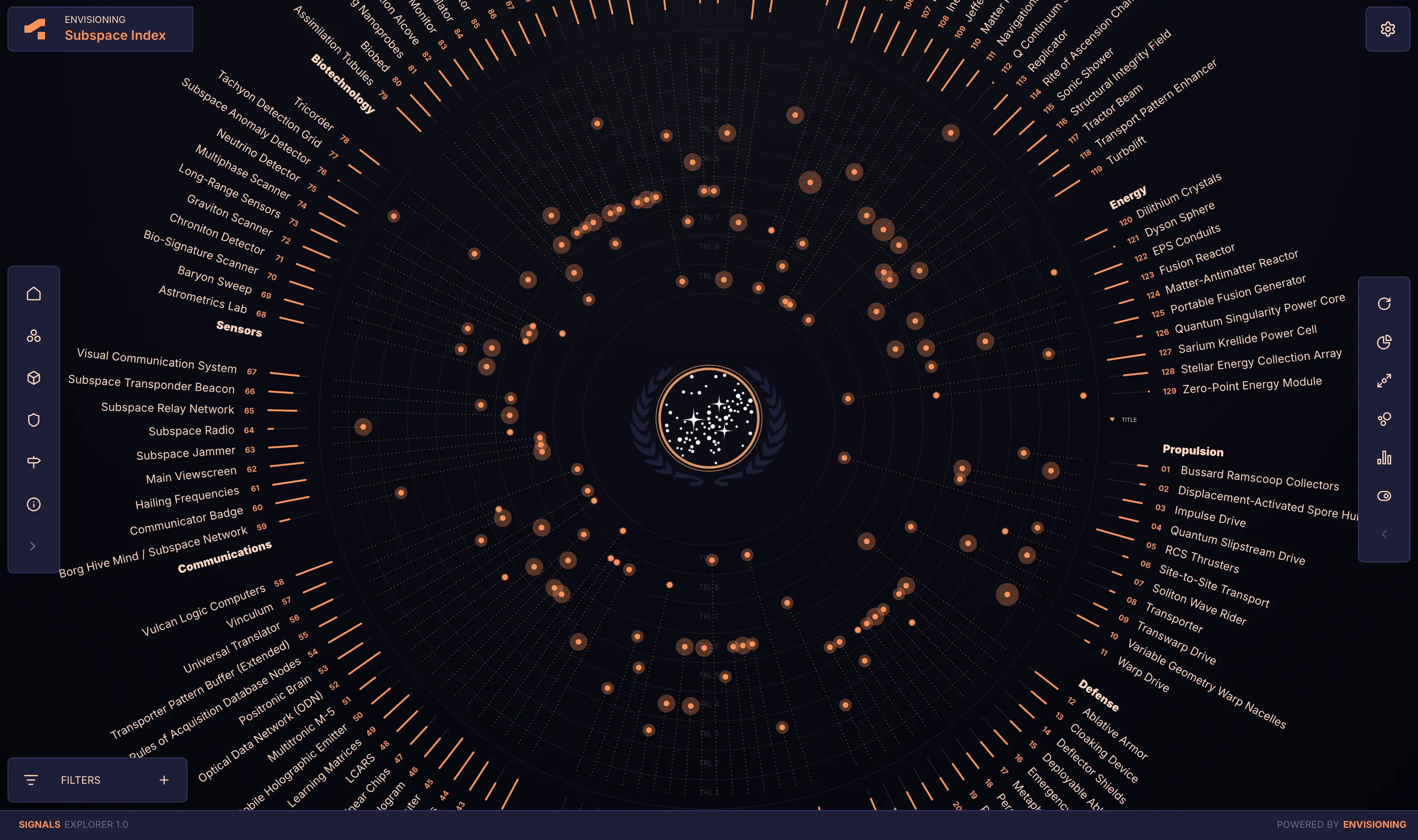Tracking Star Trek's Technology Horizon
The Subspace Index maps iconic Star Trek innovations to real-world scientific progress using NASA's Technology Readiness Levels, translating speculative fiction into actionable foresight.
This comparative index measures how close real-world science and engineering are to the technologies imagined in Star Trek. We track technologies from the Star Trek universe against real-world scientific progress using NASA's Technology Readiness Level (TRL) scale, mapping each innovation from its fictional introduction to its current scientific status. By quantifying humanity's progress toward Star Trek's optimistic future, we demonstrate how science fiction can inspire and guide real-world innovation.
This resource is free and open-access, ensuring it reaches scientists, engineers, educators, students, and anyone curious about the intersection of science fiction and reality. The Subspace Index goes beyond simple comparison by applying rigorous scientific frameworks—NASA's TRL scale, prominence scoring based on episode appearances, and scientific basis classification—to each technology. This systematic approach demonstrates that understanding our technological trajectory requires more than speculation; it demands structured analysis that connects fictional visions to real-world research, helping distinguish between near-term achievable technologies and those requiring fundamental physics breakthroughs.
Our Work
- Developed a comprehensive comparative index tracking 128+ Star Trek technologies against real-world scientific progress.
- Features NASA's Technology Readiness Level (TRL) framework (levels 1-9) to trace each technology from basic principles to proven operational systems.
- Prominence score methodology based on quantifiable episode appearances across 550+ documented episodes (1966-2018), ensuring objective and auditable ratings.
- Scientific basis classification evaluating each technology on a 3-point scale: Realistic (grounded in established physics), Speculative (theoretically possible but unproven), or Pure Fiction (violates known laws of physics).
- AI-powered research and content generation using generative AI for analysis, automated content creation, and AI-generated imagery (GPT-5 Image Generation).
- Predictive analytics using machine learning algorithms to project when technologies might reach TRL 9 based on historical progression rates.
- Comprehensive taxonomy organizing technologies across 9 categories with species and series attribution, enabling filtering and exploration.
- TRL History Graphs showing development trajectories from fictional introduction to current scientific status, with timeline projections where sufficient data exists.
- Ongoing research as an experimental project exploring the frontiers of generative AI for research, visualization, and foresight.
Impact
- Provides scientists, engineers, and innovators with a structured framework to understand which Star Trek technologies are achievable versus those requiring fundamental breakthroughs.
- Free and open-access, enabling students, educators, and the public to explore the intersection of science fiction and scientific reality.
- Inspires innovation cultures by demonstrating how technologies that seemed impossible in 1966—like communicators (smartphones), PADDs (tablets), and universal translators—are now everyday reality.
- Supports STEM education through immersive storytelling that connects science fiction narratives to public engagement and real-world research.
- Strategic foresight tool helping organizations communicate long-range technology bets with cultural resonance and scientific rigor.
- Material serves as both a reference catalog and research framework for understanding how speculative technologies evolve toward reality, quantifying humanity's progress toward the 23rd century.
